What I’ve Learned: A Photographer’s Journey is a Masters of Photography series dedicated to our students, exploring the stories behind the imagery they have created. For other student interviews check out our blog posts.
Hakim Boulouiz is a professional photographer who currently lives and works in Switzerland. We first noticed Hakim when he uploaded the below photo to the photostream. Hakim is so playful with perspective and colour to create very dynamic layers of composition. The edges of his frame are often very important and he enjoys letting us discover anonymous glimpses of bodies, fingers or arms. The unknown front story and back story either side of his captured moments often invite the viewer to imagine and project a narrative into his image. He sees all the teeth combine in the festival image and the perfect juxtaposition of gun and face in the fairground, These are carefully captured moments that show us his world, his ideas and his personality. He is an artist and we clearly see how the masters have positively influenced and inspired his work.
Tell us about yourself in a few sentences
I am a professional photographer and an expert in urban aesthetics with multidisciplinary training. I am fascinated by cities and by the urban phenomenon around the world. The city attracts me, troubles me, and interests me. I am always intrigued by the transformation of the man of nature and his way of interacting with his environment that he builds with his own decisions. I am fascinated by the way the urban space and the street tells stories about the man. How the city manages to influence the behaviour of the inhabitant of the city. The interactions between man and his environment are revealed through objects and everyday situations. I believe that the street is the sum of small moments, rather than one general frame. Every ordinary moment can be transformed into an extraordinary one. The banal can become the most significant, only if there is observation, patience, perseverance, and creativity.
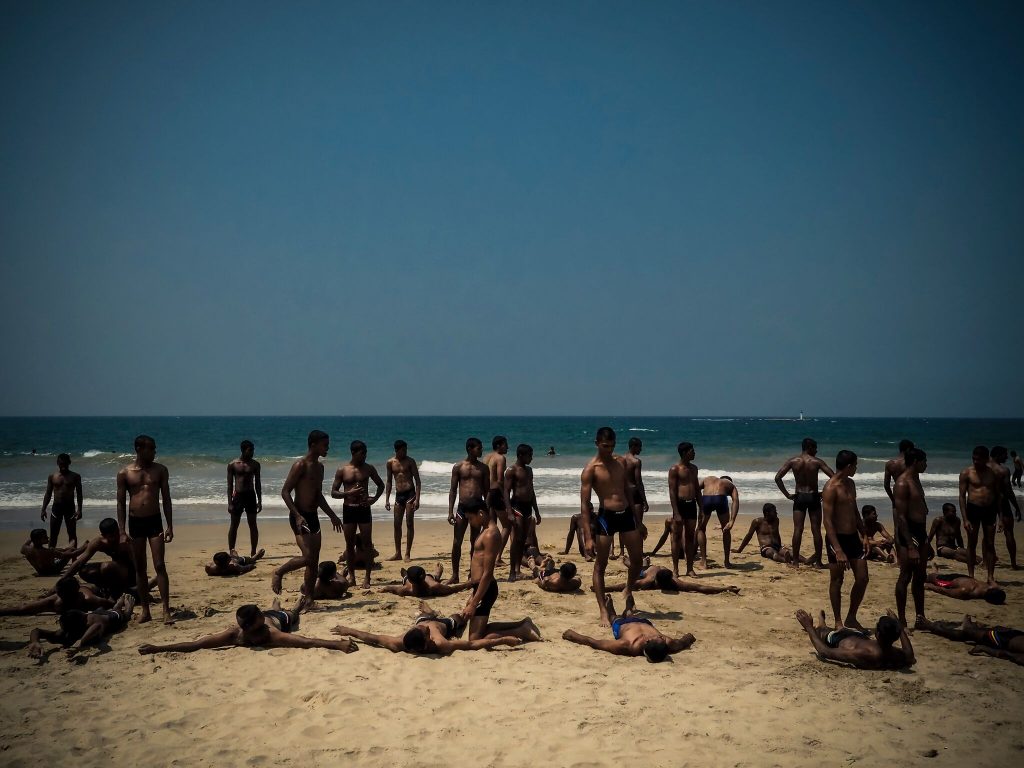
‘Siren’
How long have you been into photography?
Even though I often had a camera, at first I did not give much importance to that. But there came a moment when I realised that I had a treasure in my hands. I began to realise the need to see. I started slowly to always have a camera with me as a faithful friend. When I started to seriously learn photography was fifteen years ago. I was shooting everything: snow, friends, insects, ski slopes, and concerts. It is important to go through this step because the most difficult part is understanding the light. That’s the secret of good photography.
Step by step I understood that I have to focus more on the street style and its way of work. Urban spaces fit better to my mind and to my background in architecture and filmmaking. For both, cities are crucial, but I prefer how the art of photography can be smart enough to highlight the urban drama. However, it takes time to understand the city because of its paradox. I mean its attraction and repulsion at the same time. But this is exactly its narrative power. Once I am in the street, I still shoot everything.
What made you want to start taking photographs?
From a very tender age, I was very attracted to all artistic activities. Later, I found myself with a whole multidisciplinary program around that. I graduated first with degrees in architecture and urban design, and later in cinematography. I had always practiced photography, in the service of a model, an urban project, a film… today, I’ve chosen to express myself through photographic art.
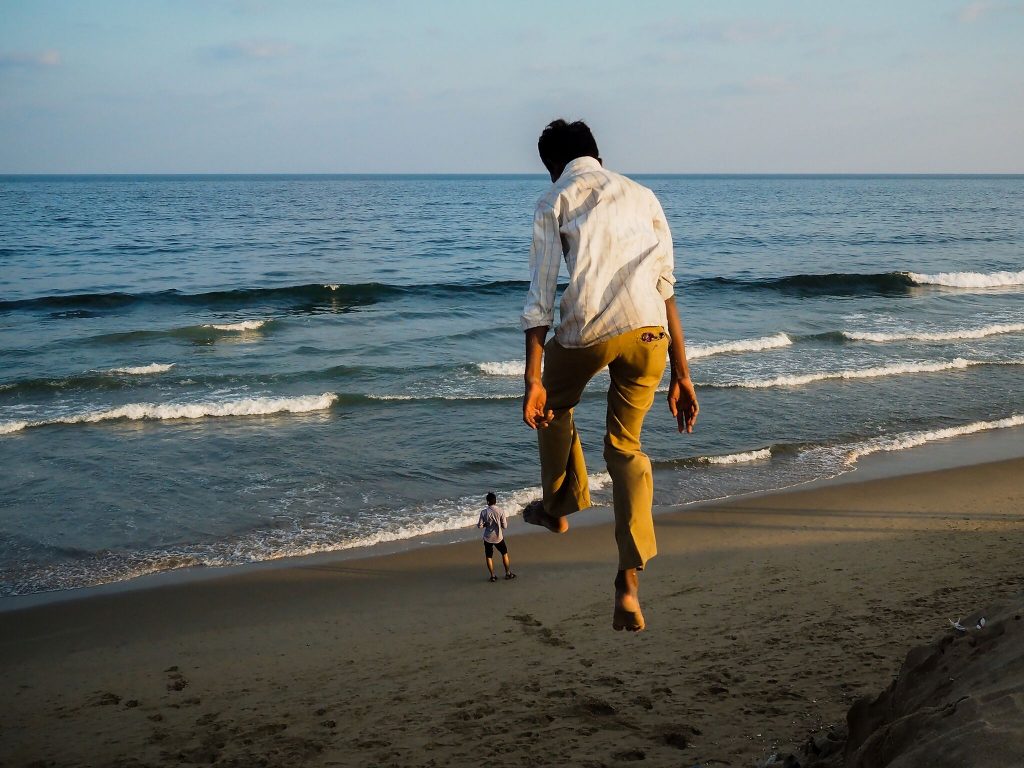
‘Flying Fish’
What do you enjoy in photography?
My multidisciplinarity wasn’t easy to carry nor was it easy to explain in the beginning. I would say that it’s really the photographic art that has allowed me to accept it. Today, I am completely focused on photography. It’s my career. It fascinates me constantly because for me, it is like music. There are no language barriers. You can communicate with people all over the globe with images. That’s great, isn’t it? This is the heart of the universality of music: the emotions and associations that we have with these activities such as victory, passion, romance, relaxation, adventure, curiosity…are, if not universal, it is extremely common among human cultures. Good photography is like that. Must be like that!
In an interview for France Info, the photographer, Sebastiao Salgado, explains that we are in a world of image and an image that moves, but the strength of photography remains intact: “Photography is a universal language. Whatever we write in photography, we can read it in France, in China, in Japan without a filter on, without translation.”
What is your favourite piece of kit?
At seven I got my first heavy and mysterious Zenit. I loved complicated things with lots of mechanics but I am not sure if my pictures had any interest or any respectable minimum of sharpness. My first digital camera was a Canon Rebel Serie. Then I worked a lot with the full frame 5D. Now for the street, I’m using, digitally, only the Olympus OMD series because of its quality and size. You can move everywhere with it! However, I still shoot film. Film teaches patience because analog photography is slow. You have to wait before sharing your scanned images online. I think that’s not bad at all so as to reduce a little bit the overdose of images on social networks.
I have a tip. Even I shoot a digital after I let my photographs “marinate” for some days before looking at them. Many photographers make mistakes on their choices of equipment. In the beginning, you believe that expensive gear will make you a better photographer. Then you get maybe a better body or a very good lens, and you realise later that your work is still weak. Then you finally start to understand what photography truly is. One of my main step in street photography was not a new camera but the decision to shoot only with primes lenses: 28mm, 35mm, and 50mm (depending on the subject).
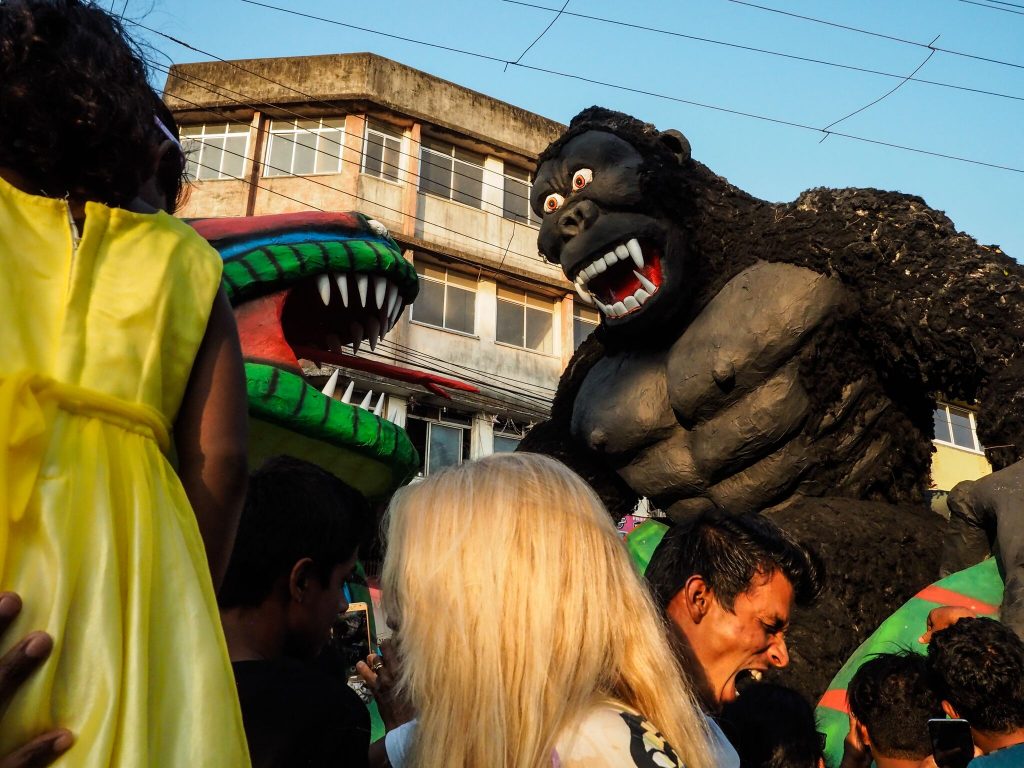
‘Ferocious’
What was the most influential moment in inspiring your photography?
I regularly look closely at the works of some photographers, living and dead, in order to learn and to find inspiration for my projects. I also nourish my approach with other forms of expression, like poetry and short literature. Cinema inspires me greatly, especially German expressionism, the universe of David Lynch, or Akira Kurosawa. Painting remains inescapable in photography. I love Dali, Magritte, Keith Haring…Pictorial art, in general, provides the best lessons for art on the street.
Personally, I enjoy working with layers in order to build several levels of reading. This gives depth to the image. So in this approach, I’m in total admiration of the Flemish artist Brueghel, known for his landscapes, satirical paintings, and allegorical Biblical scenes. I’m also interested in the artistic production of the 60’s. Here, it’s not about any sort of nostalgia, but more about the recognition that certain works of the past knew how to offer an effective way for constructing a narrative based on a composition, a gesture, and a style when all is said and done.

‘Golden Wick’
What does your photography say about you as a person?
I am a photographer because I would like to make people stop and think. I’m a photographer because I like to tell stories. What would life be like without stories? Stories are what expand and makes people who and what they are. I consider every city like a wonderful and mysterious ballet with humans in the middle. I like to point out and to question the human being and his space in the contemporary context. When I shoot, I always have some themes in mind. It helps you to work consistently on a specific object. As I said, I consider street photography as a series more than isolated images. So editing becomes a crucial step when I try to stay focused on the whole.
The goal is not to create images that need to stand alone but to build their power as part of a greater collection. You may not appreciate the value of what you are creating until the series begins to take form ; so do not spread images very quickly… Wait to see what develops as the series accumulates. And sometimes, a simple unexpected title or caption can transform how you see the elements or story presented within the frame. However, even though I love photographs, I try to protect myself from the current society’s visual pollution and invasion of images on social media. I believe that the contemporary world needs accurate imagery that translates the aspirations of a new generation in the midst of a current society that instrumentalizes and spreads “poor” pictures. We need effective art that is able to make us reflect.
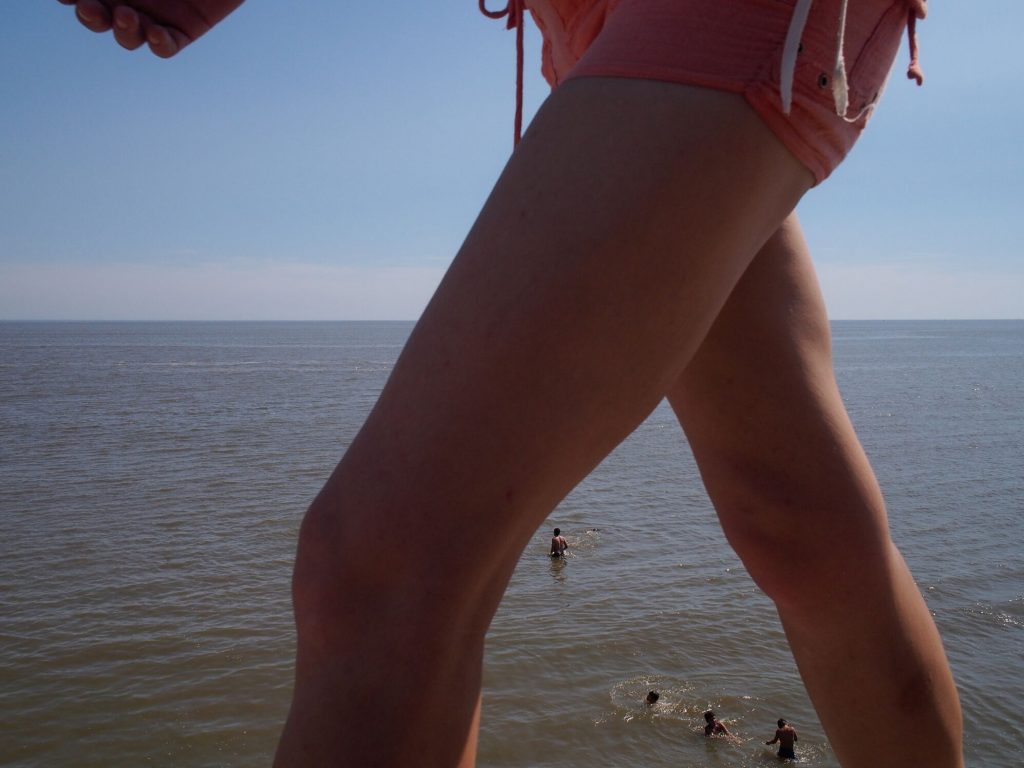
‘Swimind’
Which photographer or book has had the biggest impact on you? Why?
I have a lot of respect for André Kertész’s work and his visual lyricism and humanism. He remains less known than his contemporaries, however, his photography is very powerful and inspiring. Kertész once said: “Everybody can look, but they don’t necessarily see”. It’s important to learn how to see and to understand the difference between a wrong and a right ‘moment’. He also said that photography can be technically perfect and even beautiful, but they have no expression. Kertész is revered for the clarity of his style and his emotional connections with his subjects. Kertész felt that intuition is the best ingredient for creating poetic substance. He was able to compose many still lives with the aim of transforming the simple, usual, and banal into something poetic, delicate, and ethereal… that’s hope and optimism!
Are you working on a photography project?
I work on several small projects at the same time. But I have the same big project in progress that is related to my street work in colour, which started five years ago through several cities in the world, and that I want to conclude with a book and an exhibition. Sincerely, I don’t like thinking alone. I believe in teamwork with respect, creativity, and joy, I would like to work with publishers and art managers. I believe that their value will be added to the project. Today, it is very difficult to know when it will be completed. Maybe in three months or in thirty years. We’ll see! We have time (big smile).
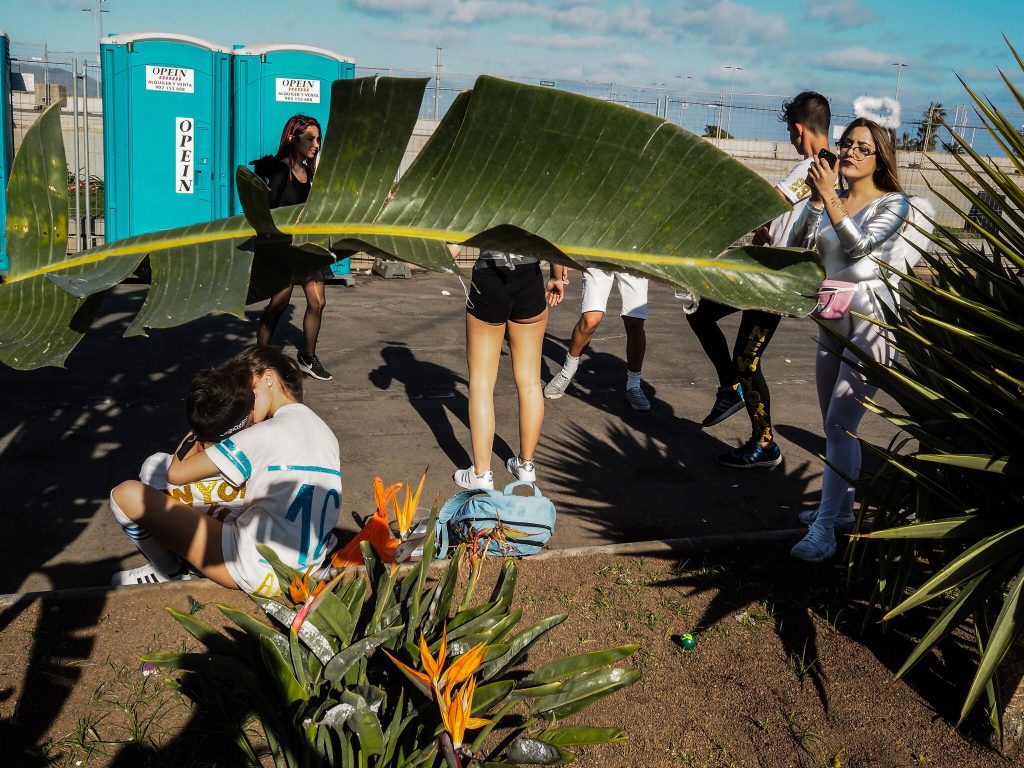
‘Choral’
What are your favourite photographs that you have taken?
As a photographer, I fantasise about the making of a photograph; that you could spend a long time looking at her, to contemplate and to try to decode. The opposite of a society of speed, immediacy, and shock. One of my favourite photos is “Choral” (see above image). Why this name for it? In western music, a choir designates a vocal ensemble, whose members, called choristers, sing collectively under the direction of a conductor, such as a choir of a college. However, what is a choral photography? This word came to me from the concept of the choral film, where there is no main character, but rather three or four and they relatively have equal importance which cross or not. American Graffiti (1973, Lucas), 21 grammes (2003, Iñárritu), and so on.
By analogy, choral photography becomes a work that is distinguished by the transformation of most protagonists into main subjects, in other words, it’s the anti-portrait (in the isolated, posited, and limiting sense of the term). The eye moves from one place to another, from one story to another within the same framework. This type of photography becomes, in the best, a metaphor of a society and a multiple daily caught between nostalgia, the reality of the present, and the future suspense. Choral pictures, chaotic pictures, mosaic pictures, and puzzle pictures, call them what you want, aren’t more than ever a metaphor of dislocation and fragmentation in the contemporary city.
[activecampaign form=15]
What is your favourite photograph from another photographer?
I like the simplicity and strength of a photograph of the American photographer Philip-Lorca DiCorcia, from his project in the “Boystown” of Los Angeles, a district of West Hollywood, in the 1980s and 1990s. In one frame, the photograph sums up all the delicate situation of illusion and prostitution in the US (see below for image from Boystown project).
The caption for the photo is Major Tom, 20, Kansas City, Kansas, $20 (caption includes the subject’s name, age, hometown, and fare). DiCorcia was able to convince these men to pose for him and to give him a little of their time. The men he found in Los Angeles came from all over the country, attracted by the Hollywood dream.
The work of DiCorcia is generally distinguished by a particular light, hot and plastic at a time. Philip-Lorca DiCorcia takes advantage of the reversibility of the situation, “the light is there to illuminate, to add a dramatic element”. Things often happen in the street; theatre of confusion, speed, noise, jostling … But with him, he manages to make sure that nothing happens. DiCorcia said: “I’m not interested in events. In my photographs, people are not themselves, they are representative of a state of the human race”.

How did the course benefit you?
First, I like the fact that master is in situations and places that brings out the best of him and that transmits the deepest of his thought and know-how that makes him a true master, every lesson is a short film done very well. I have been in the film industry for a long time, so I can tell you when the work is good. Today, mediocre films about artists exist a lot online. You know why? Because everyone pretends to be a film director as soon as he gets a video camera or a smartphone.
The way the course is fashioned, cut, and staged, has really been able to communicate the master’s experience. All communicated elements are accessible and easy to understand. I love the fact that you can follow it at your own pace and everywhere. The notes and transcripts given, following each course, remain of great use to complete the notes and to be able to revise them another time.
In the course you have taken with us, what was your favourite lesson and why?
One of my favourite lessons is Lesson 5 of Joel Meyerowitz’s course; THE MAGICIAN’S TRICK
Joel explains that the picture has a kind of twinning quality, a kind of nothing major is happening. But the fact that some small incidents appeared together, the situation becomes like a magician’s trick, “Poof! Now you see it!” As he said. Photography happens that fast, right in front of your eyes. Every photographer becomes a magician. A magician with a camera. A magician of light, form, and ideas. Do you know how the magician shows you his trick? He does this, and then you see it. Well, that’s photography. It shows itself to you, and only if you’re quick enough to see it, can you make magic out of it. So work on your trick, don’t wait to follow your instinct, Joel advises.
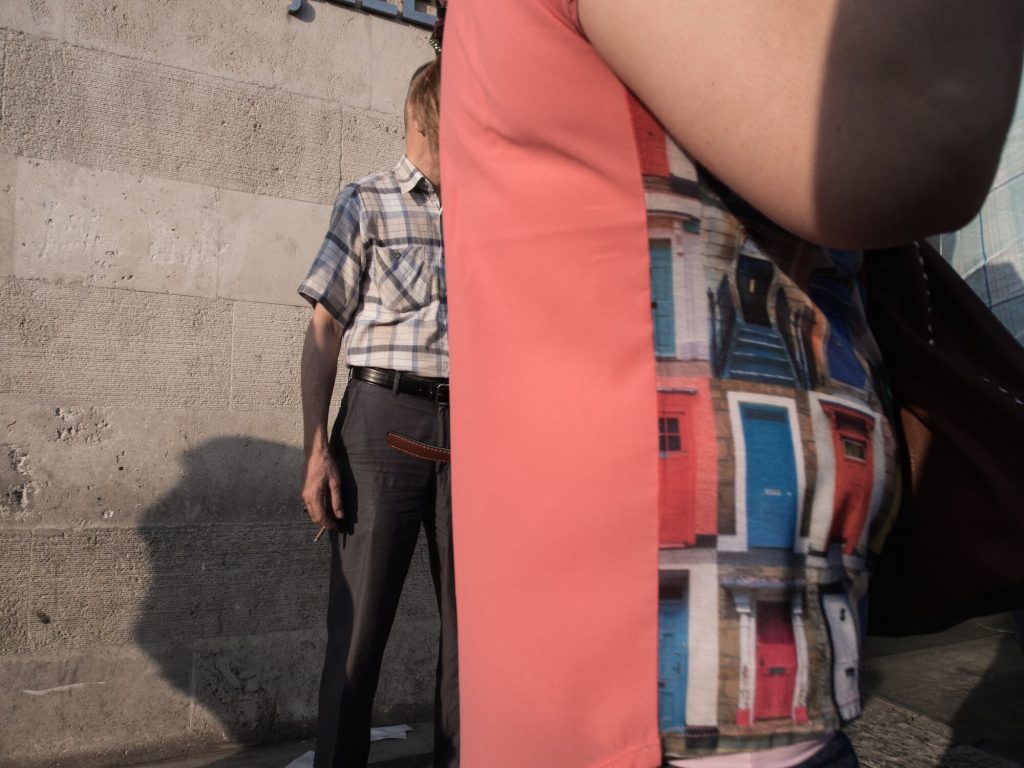
‘Finestra’
What is the best piece of photographic advice you have come across?
Joel Meyerowitz explains very well that photography isn’t only about the object. Photography is about the combination of elements, the associations, the relationships. LESSON 16 JOEL MEYEROWITZ.
I really love this idea. In other words, what matters is not the object X or Y but the relation and interaction between the two objects. It is not about the red door and the green door but it’s about the space between the two doors. It is the relationship between the two doors that creates space, that creates the street, and motivates art. In addition, the differences are not clear boundaries, but more or less open spaces between the two objects. It’s always amazing to work on the concept of in-between in his photographic research!
For more photos by Hakim, check out our photostream here, where he contributes frequently. Check out Hakim’s Instagram page here.
A Photographer’s Journey credits.
Photo 1, 2, 3, 4, 5, 6, 8 by Hakim Boulouiz
Photo 7 by Philip Lorca-DiCorcia
Get 7 amazing free lessons from the Masters
Each complete lesson is packed full of tips and tricks from some of the greatest photographers in the world
If you’d like to learn more about all our Masters Of Photography, then why not join up to our Free Online Photography Courses, where you can trial some content for FREE before you enrol in a photography course. You'll get a lesson from each our Masters: (Albert Watson, Cristina Mittermeier, David Yarrow, Joel Meyerowitz, Nick Danziger, Paul Nicklen and Steve McCurry!). They'll cover a number of genres of photography including landscape photography, street photography, fine-art, sill life, fashion, travel photography, conservation photography, wildlife photography and much more.

